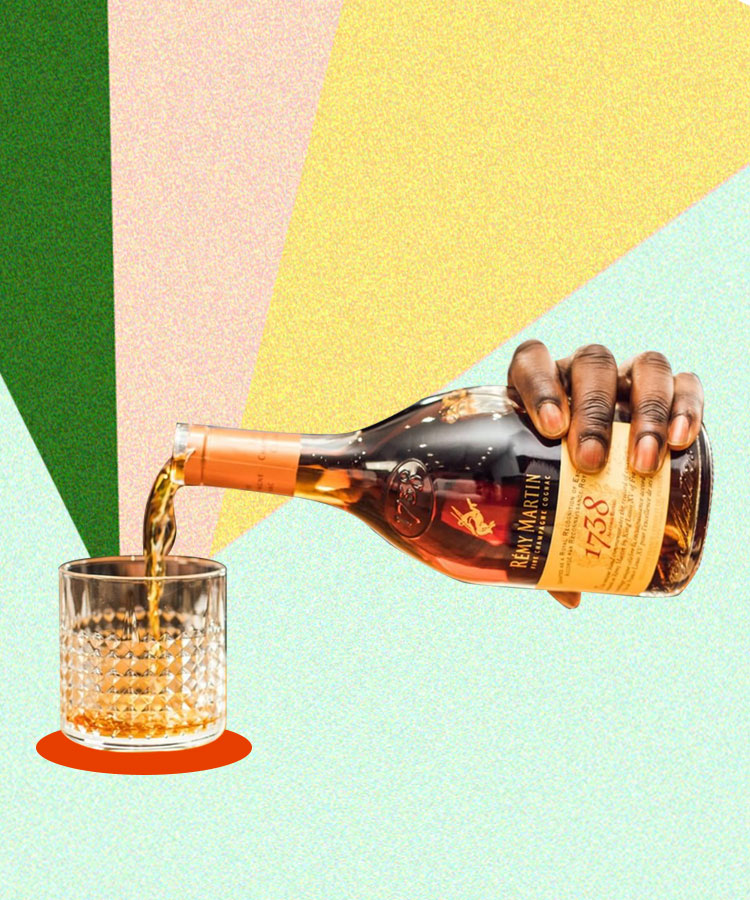
From the Sidecar to the storied Vieux-Carre, bartenders have showcased Cognac’s many charms in cocktails for well over a century. A grape-based brandy made in the picturesque region of southwest France bearing the same name, Cognac has become a permanent fixture of classic cocktail menus, ranging from the aromatic and refreshing, like the Brandy Crusta, to variations on warming winter drinks like the Hot Toddy.
While Cognac has historically been enjoyed as a digestif, Gavin Humes, a bartender at Scratch Bar & Kitchen in Los Angeles, praises its merits as more than just a sipper. “I love Cognac because it’s a particularly useful and special spirit. It has the depth and complexity of some of the best whiskies in the world, with a hint of sweetness. It’s so incredibly versatile and delicious in so many ways!” he says.
Jeremy Fowler, the wine and beverage director at New York City’s Zuma, considers Cognac the sleeper hit of the bar. “I want everyone to drink more of it,” he says. “It’s rich, inviting, powerful, and delicate all at once. It’s the perfect spirit to enjoy neat at the end of the day when you just need something to warm your bones and make you feel sexy.”
When it comes to choosing a brandy, Fowler’s go-to is Rémy Martin, a brand founded nearly three centuries ago that remains one of the top-selling Cognac houses worldwide. “Some Cognac houses offer affordability, others pure excellence, some have a dazzling variety; Rémy Martin does all of that in style,” he says.
Cognac’s intricate balance is achieved through its unique process of production. The brandy begins as a light and crisp white wine, typically made from three different grape varieties. Of the three, Ugni Blanc is used most frequently and creates wines that are low in sugar and highly acidic.
The fermented wine undergoes two distillations in small copper pot stills, resulting in an aromatic eaux-de-vie that clocks in at around 70 percent ABV. The distillate is then matured in oak barrels from the French forests of Limousin or Tronçais.
Cognac comes with a spectrum of age designations that typically refer to the youngest blend in the bottle. Bottles labeled with V.S. or “Very Special” have been aged for at least two years, which is the minimum aging required for Cognac. V.S.O.P. or “Very Superior/Special Old Pale,” indicates a minimum of four years of aging, while X.O., or “Extra Old” signifies at least 10 years. Some Cognac’s are aged even longer, such as Rémy Martin’s Louis XIII, a rare cognac made with eaux-de-vie that spend up to a century in barrels.
The aging process results in a complex and nuanced flavor profile that can include cinnamon, tobacco, licorice, toffee, brown sugar and even banana. Each sip of Cognac tells an evocative story with a unique balance of fruit, wood, and alcohol.
It is this dynamic and enchanting combination of flavors and textures that has connoisseurs and bartenders so captivated by Cognac. To learn more about what keeps experts coming back to the revered brandy, VinePair asked bartenders why they love Cognac. Here’s what they had to say:
“I love a Cognac just neat while sitting alongside a warm fire, or in a cocktail while out for a nice night. My personal favorite is finding some of the smaller producers of Cognac to explore the different expressions and complexities that come along with them.” — Gavin Humes, Bartender, Scratch Bar & Kitchen, Los Angeles
“Cognac, for better or worse, is seen as exclusive, an ‘acquired taste,’ and somewhat unavailable for a casual drinker. We tend to think of it as something movie villains, millionaires, fur coat wearers, and fireside sippers in leather-backed chairs drink and keep to themselves (disclaimer: none of that is true). However, it’s this faux exclusivity that lends itself to a particular type of enjoyment. — Jeremy Fowler, Wine/Beverage Director, Zuma, NYC
“I love Cognac in cocktails. Don’t get me wrong, [Cognac’s] amazing on its own and sometimes can be cost-prohibitive to use the good stuff in your drinks. … Probably the most well-known Cognac cocktail in the U.S. is the Sidecar. A delicious recipe of Cognac, triple sec, and lemon juice. As an avid collector of cocktail books and scoring many old recipe books while I spent the lockdown in Paris, there are so many more wonderful Cognac cocktails out there to try.” — David A. Roth, former Head Bartender, Covina, NYC
“One of the many reasons I love Cognac is for its history! As a centuries-old spirit there are so many stories to be told … from how it was originally conceived (Dutch settlers needing to preserve the wine they were bringing home) to stories about how different brands came to be what we know them as today (i.e., King Louis XV recognizing Rémy Martin’s excellence in Cognac-making by allowing him the right to plant new vines). Not to mention how much of history was influenced by drinking Cognac! Storytelling is one of my favorite aspects of the booze and bar world and the stories of Cognac are no exception.” — Crystal Chasse, Beverage Director, Talk Story Rooftop, McCarren Hotel, Brooklyn
“I always put a brandy drink on every list. It brings a subtlety and fruitiness to a cocktail you don’t easily find with other brown spirits. Rye can be overly spiced, bourbon too assertive, aged rums, a little sweet. Cognac as a base (even as a secondary spirit in a split base) can lift the entire drink. I find putting it in a house drink is also a good way to introduce guests to Cognac in general. It’s often thought to be expensive or unapproachable, but it absolutely doesn’t have to be either of those things.” — Lucky Preksto, Head Bartender, Bowery Meat Company, NYC
“Cognac is my favorite spirit! I love how versatile it is in cocktails, either as a base spirit or as a modifier to add texture or proof. Different cognacs can add a multitude of flavors and aromas to a drink, and are also wonderful to enjoy on their own.” — Laura Newman, Owner, Queen’s Park, Birmingham, Ala.
This article is sponsored by Rémy Martin. Click the button below to stock your bar with premium cognac.

